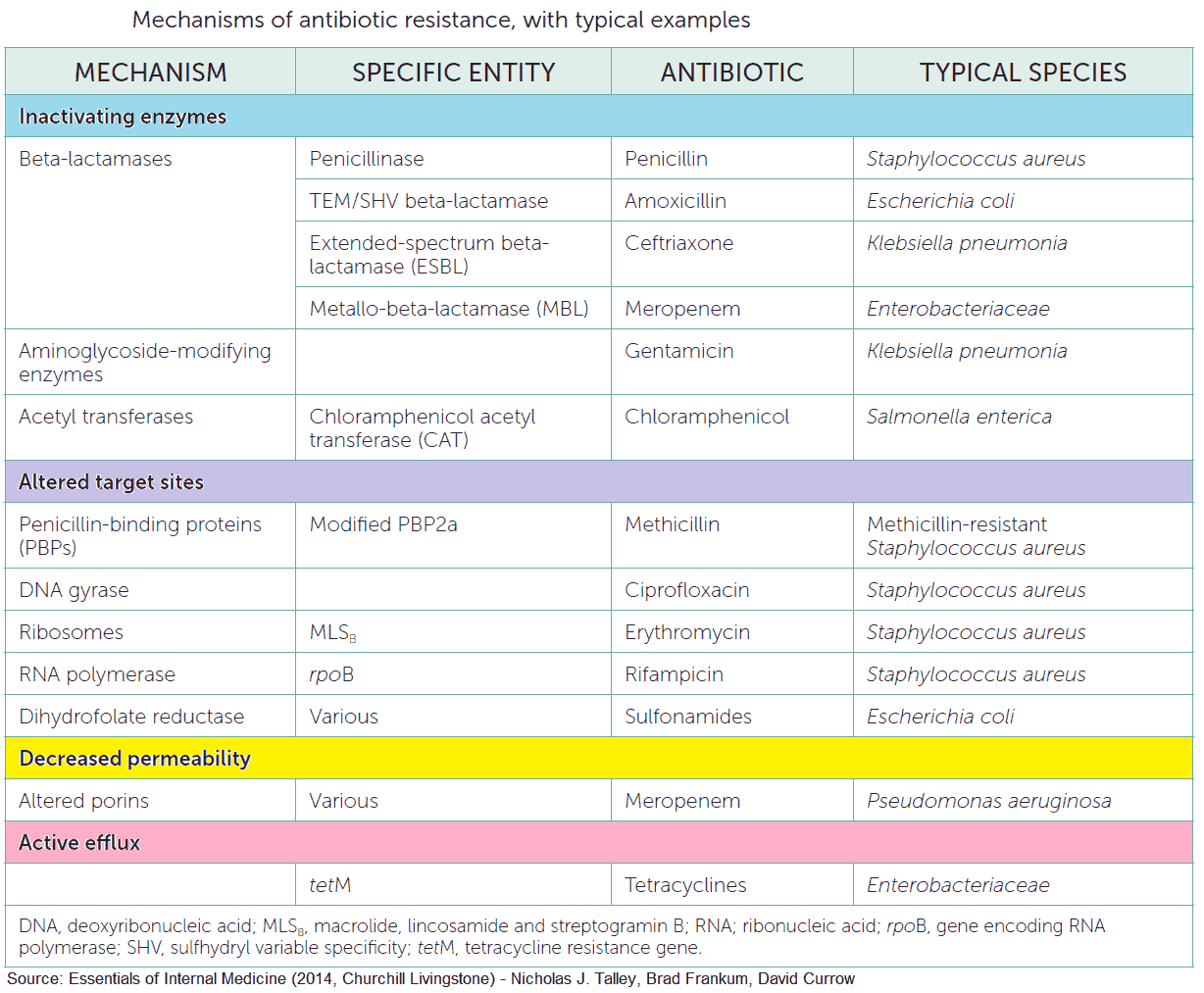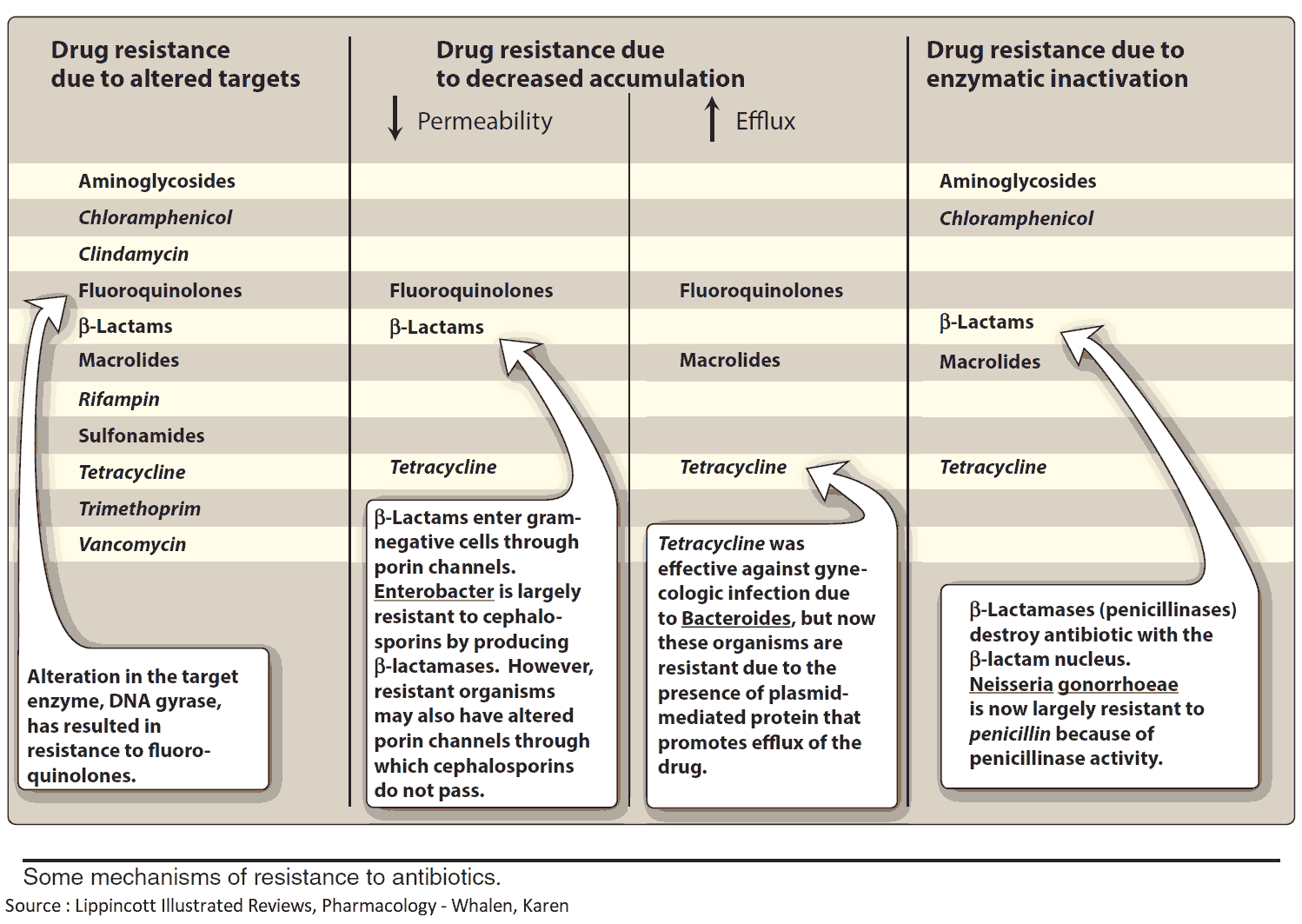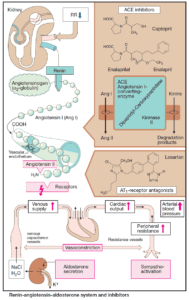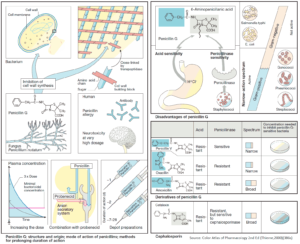Table of Contents
Antibiotics are prescribed to ~15% of emergency department (ED) patients and are among the most frequently utilized medications in emergency medicine. Often, the emergency provider (EP) must make clinical decisions on antibiotics for resistant organisms based on incomplete, or absent, microbiologic data.
Notwithstanding, the list of resistant organisms has grown exponentially. In order to improve outcomes and limit the number of resistant organisms, it is imperative for the EP to carefully select appropriate antibiotics for resistant organisms in the treatment of ED patients with select infectious diseases.


We will discuss appropriate antibiotic medications for common ED infections including urinary tract infection (UTI), community-acquired pneumonia (CAP), and skin and soft tissue infections.
Urinary Tract Infections (UTI)
The most common pathogen responsible for a UTI is Escherichia coli. Traditionally, trimethoprim-sulfamethoxazole or ciprofloxacin has been used to treat uncomplicated UTIs in ED patients. Importantly, resistant rates to these two antibiotics have risen to more than 20% in select regions.
Similarly, aminopenicillins and first- and second-generation cephalosporins also have reduced efficacy in the treatment of UTIs. As a result, nitrofurantoin is now recommended as the first-line antibiotic for an uncomplicated UTI. Current resistance rates for nitrofurantoin are low. Importantly, nitrofurantoin has reduced efficacy for Enterococcus, Klebsiella, and Pseudomonas organisms.
UTIs caused by extended spectrum beta-lactamase (ESBL)–producing organisms are increasing in health care. Up to 20% of infections caused by Enterobacteriaceae are now due to ESBL-producing organisms.
Risk factors for infections due to ESBL organisms include:
- age >65 years,
- multiple comorbidities
- nursing home residence
- recent hospitalization
- recurrent UTIs.
ESBL-producing organisms have high antibiotics resistance rates to ceftriaxone, pipercillin-tazobactam, and ciprofloxacin. Carbapenem antibiotics are currently the best option for patients with an ESBL-associated UTI. Importantly, these medications should be used judiciously to avoid the development of resistance to this class of antibiotics as well. Urine cultures should be sent for patients at risk for drug-resistant UTIs.
Pneumonia
Community-Acquired Pneumonia (CAP) is a common infectious disease that results in hospitalization from the ED. Standard diagnostic criteria for CAP includes clinical signs and symptoms of pneumonia (i.e., fever, cough, pleuritic chest pain) and the presence of an infiltrate on chest x-ray.
Surprisingly, up to 30% of patients diagnosed with pneumonia in the ED do not meet these standard criteria. In addition, many patients have a viral etiology for their pneumonia and do not need antibiotic therapy.
In the United States, Streptococcus pneumoniae is the most common bacterial pathogen in CAP. The primary outpatient treatment of CAP in lowrisk adult patients is a macrolide antibiotic (i.e., azithromycin). For outpatients with comorbidities, a fluoroquinolone or the combination of a macrolide and β-lactam antibiotic is recommended.
Importantly, up to 30% of severe pneumococcal infections are resistant to these first-line antibiotics. Patients who are younger than 5 or older than 65 years of age are at risk for severe pneumococcal infections. In 2010, a 13-valent pneumococcal vaccine was developed that has dramatically reduced the spread of resistant pneumococcal strains. Nonetheless, patients with severe pneumococcal infection are generally admitted.
A macrolide antibiotic in combination with either a respiratory fluoroquinolone or β-lactam is recommended for ED patients with CAP who require admission.
For patients with suspected drug-resistant S. pneumoniae, Pseudomonas infection, or those who are critically ill, an antipseudomonal β- lactam (i.e., piperacillin-tazobactam) should be administered in addition to a macrolide antibiotic.
Patient risk factors for infection with drug-resistant Pneumococcus or Pseudomonas include:
- chronic heart or lung disease
- diabetes mellitus
- asplenia
- malignancy
- immunosuppression
- recent antibiotic use
Vancomycin should also be added to the antibiotic regimen when infection with methicillin-resistant Staphylococcus aureus (MRSA) is suspected. Health care–associated pneumonias occur within 90 days of a hospitalization or nursing home admission and carry a high risk of infection with multidrug-resistant organisms. Therefore, broad-spectrum antibiotic coverage is recommended (e.g., combination therapy with piperacillintazobactam and vancomycin), with further adjustments based on microbiologic culture data.
Skin and Soft Tissue Infection
ED visits for skin and soft tissue infections (SSTI) have nearly tripled in the last 15 years. Although community-acquired MRSA is commonly implicated as a causative pathogen in SSTI, beta-hemolytic Streptococcus species still account for nearly 80% of cases of cellulitis without abscess. These organisms remain susceptible to penicillins and first-generation cephalosporin antibiotics.
Treatment for MRSA infection is generally unnecessary for patients with nonpurulent cellulitis. In addition, many cutaneous abscesses can be sufficiently treated with incision and drainage alone, as antibiotic treatment has not been shown to improve cure rates.
Treatment for MRSA infection should be considered in patients with:
- open wounds
- previous penetrating injury
- intravenous drug use
- immunosuppression.
Broad-spectrum antibiotics should be reserved for patients with suspected necrotizing skin infections or those with signs of systemic illness. Although vancomycin is currently the first choice for MRSA-associated SSTI, EPs should avoid giving a single dose of vancomycin prior to ED patient discharge. A single dose of vancomycin does not result in therapeutic blood levels and contributes to the development of resistant organisms.
Appropriate outpatient regimens for suspected MRSA SSTI include clindamycin, doxycycline, or the combination of trimethoprimsulfamethoxazole and cephalexin.
Key Points
- Local microorganism resistance rates and hospital antibiograms should be reviewed when selecting an antibiotic.
- Nitrofurantoin is the first-line antibiotic for uncomplicated UTI.
- A carbapenem antibiotic should be used as a first-line agent to treat a UTI in patients at risk for infection due to an ESBL-producing organism.
- Consider the possibility of drug-resistant Pneumococcus, Pseudomonas, or MRSA infection in critically ill patients with pneumonia.
- Avoid MRSA antibiotics in well-appearing patients with simple cellulitis.



